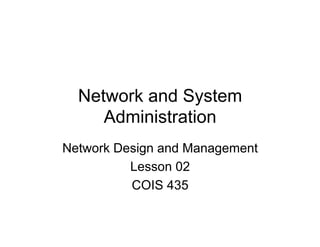The document discusses the systems development life cycle (SDLC) process for developing business systems. It describes the typical phases of SDLC - planning, analysis, design, implementation, and maintenance. It notes that a systems analyst is responsible for managing projects and guiding them through each SDLC phase. The document also provides an overview of some network modeling techniques for depicting connectivity within wide area, metropolitan area, and local area networks.











































